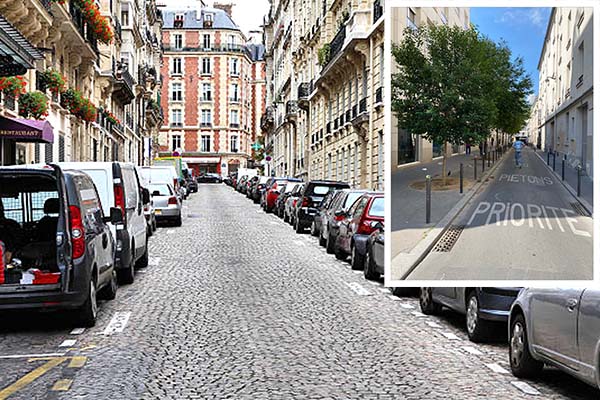And just a few growing pains....
Our Bike Planner travelled to Europe for the first time since borders closed early in 2020. Time with family was the highlight but coming in a close second was seeing first-hand how London and Paris have embraced bike riding in recent years.
Paris has been the poster child city for grabbing the opportunities created by quieter streets to create space for people to socially distance themselves while avoiding public transport, inspiring urbanists around the world.
But the changes began many years before and ramped up in 2014 when Mayor Anne Hidalgo was elected with a promise to reclaim the city’s notoriously car-infested and polluted streets for people. Recent policies include plans to roll out another 650km of cycle lanes, including a network of express cycleways from the suburbs that mirror the RER commuter rail lines, to remove 72% of all on-street parking spaces to improve street scapes for walking and cycling, to re-configure the Champs-Elysées as a leafy, calm boulevard and to tame the infamous Boulevard Périphérique by cutting vehicle lanes. Everything is underpinned by the ambition to create a “ville du quart d’heure” where all residents can reach all daily activities within a 15-minute bike ride or walk.
What does it all feel like on the ground?

Summer cycling along the Canal St Martin - cycle counts clocked 60 bikes per minute one early weekday evening – that is 3,600 per hour! (Source: Bicycle NSW)
There is an incredible bustle of people out enjoying the city. Pedestrians have much more space and at times you can hear birds sing again. Bike lanes line major streets, all filled with a steady stream of bike and scooter traffic. It is a pleasure to sit in street cafes, picnic by the Canal St Martin or the Seine and explore the traffic-calmed back lanes.
Cycling is a lot of fun but quite wild. Parisians cycle like they drive and rules are broken brazenly by all road users. However, with plenty of eye contact and a willingness to go with the flow, the chaos soon feels comfortable …. and just a little bit exhilarating!
Bike-share as public transport
The Vélib' Métropole service provides visitors with easy access to two wheels. Launched in 2007, Vélib' is one of the largest in the world outside China. Paris has the most trips made on bike-sharing schemes per year per person, with a record 5.5 million journeys made in a single month in September 2020.
It is not always easy to find working bikes, particularly for a group. Some bikes are electric but these are often out-of-service. The Vélib' app was an essential tool for finding docking stations with bikes ready to collect, or space to drop off rentals. The scheme is a bit rough around the edges – like many things in Paris!

A tree-lined cycleway along a major boulevard, and a common problem with the Vélib' bike-share – docking stations with no working bikes. The Vélib' app provides details on how many bikes would be available - very useful for averting frustrations! (Source: Bicycle NSW)
Brave and transformative changes to road use
Some incredible road space re-allocation has occurred, most famously on Rue de Rivoli, where 4 vehicle lanes have been repurposed into a hugely generous active transport spine with just one lane left for taxis and public transport. Another celebrated transformation is along the right bank of the Seine, where a former expressway has been closed to all vehicles. Bars and cafés have sprung up and future landscaping will remove all traces of the noisy, polluted road that once marred this wonderful stretch of riverside.

More than 43,000 cars a day used to speed along this expressway in central Paris
(Source: Getty Images/Corbis/Bicycle NSW)
Both projects make a bold statement about the modes of transport and uses of valuable public space that will be prioritised in the Paris of the future.

The city’s ongoing project to remove 70,000 parking spaces will allow car-clogged residential streets to emerge as tree-lined ‘pietons priorite’ spaces with wide footpaths and low vehicle speeds. Source: iStock (left), Bicycle NSW (inset right)
Much of the infrastructure has been installed very quickly, and this has caused a few problems, particularly with so many new and inexperienced bike riders. Linking all the brilliant bits are strange and complicated junctions, unclear wayfinding and narrow lanes in the gutter. However, there are SO many people of all ages on bikes - and no Lycra in sight! This shows that perfection is not needed to get a huge uptake in cycling. What Paris has achieved with its haphazard and unoptimized approach is to lay a true network across the city, which has quickly built ridership and momentum for more change. The expensive Dutch-style bike lanes can follow later.
Check out this excellent video by favourite urban design channel Not Just Bikes for a great visual introduction to all the changes that are making Paris a Cycling City.
Sydney could become a Cycling City too but the Councils and Government need lots of encouragement! Please support our advocacy campaigns by joining the Bicycle NSW family today.

